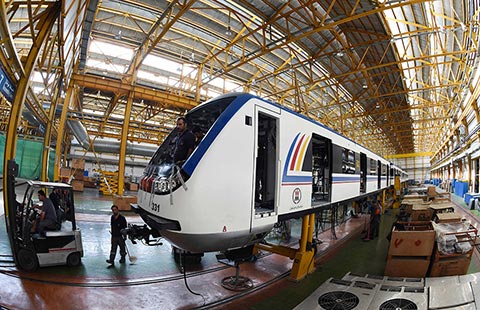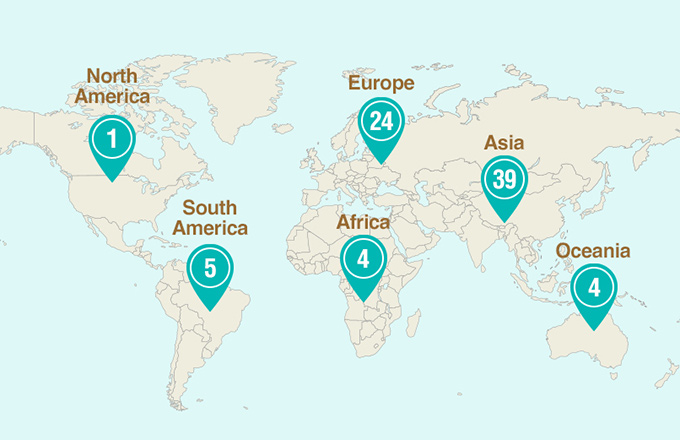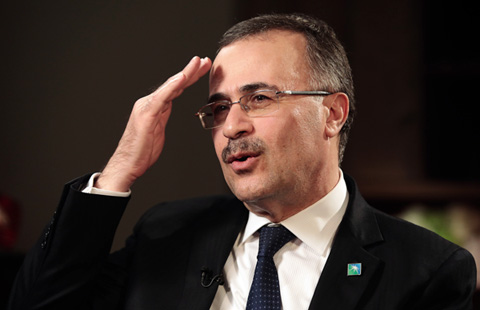Banking regulators vow to eliminate secondary risks
BEIJING - To strike a balance between financial stability, gradual deleveraging and stable economic growth, China's banking regulators have rolled out a slew of measures.
Authorities have said the country will continue to implement a prudent monetary policy and emphasize the elimination of financial risks. However, the priority of regulation is to avoid new risks associated with the disposal of existing ones.
Systematic regulation
Recent regulatory measures, which focus on latent risks and pressing problems in the banking system, target both irregular operations and overall market order, and authorities also want to increase market players' ability to fend off risks, said Xiao Yuanqi, head of the prudential regulation bureau of the China Banking Regulatory Commission (CBRC).
"Potential impacts of these measures have been assessed in advance," said Xiao, adding that CBRC will take full account of actual risks in the banking sector and step up financial regulation.
To push forward tightening of the regulation, authorities will carry out the measures in an orderly way, offer banks a buffer period of four to six months for self-scrutiny and rectification, and set different standards for new and old businesses, said Xiao.
The banking regulator announced Monday it is implementing 46 legislative programs in 2017, covering risk management for bankruptcy and liquidity of commercial banks as well as for cross-industry services to plug regulatory loopholes and guard against financial risks.
Research will be done on another 16 programs, including microfinance company supervision and trust company liquidity management, according to the CBRC's work plan.
Ongoing self-scrutiny
China will enhance coordination in financial regulation to manage the timing and pace of regulation to stabilize market expectations, according to a quarterly monetary policy report released by the People's Bank of China (PBOC).
"Banks across the country are conducting self-scrutiny, and regulators have not carried out on-site inspections," said Xiao, underlining the need to grasp and monitor the overall situation of the banking system.
As for the shrinking inter-bank business reported by some banks, Xiao pointed out that the phenomenon might stem from jitters caused by misunderstandings of relevant policies.
"It is normal that financial institutions adjust asset-liability structures according to the external business environment and internal resource allocation," Xiao said. "CBRC will firmly support these adjustments that are conducive to risk control."
Banks usually have stress tests on mortgage loans -- which account for a big share of their loans -- to ensure low non-performing ratios.
Authorities will focus on lending to smaller property developers, excess real estate credit in third- and fourth-tier cities, and financial institutions that focus too much on mortgage loans, according to Xiao.
"Disposal of risks must be tactical and we should not trigger new risks by removing existing ones," Xiao said.
"Deleveraging efforts must, at the very least, not have any systemic financial risks," said Deng Haiqing, chief economist with JZ Securities, adding that regulators will choose a soft landing for deleveraging to avoid secondary risks due to excessive regulation.
The goal of regulatory policies is to curb irregular market operations and encourage adherence to the law, said Xiao.
Robust business
"Recent CBRC documents almost covered all aspects of commercial banks' operation and management conducive to avoiding various risks," said Wang Jian, chief analyst with Guotai Junan Securities.
Thanks to rigorous regulation, the quality of the country's banking assets is generally stable and banks' ability to resist risks is strengthening.
According to data from CBRC, the provision coverage ratio of commercial banks - a measure of funds set aside to cover bad loans - was 178.8 percent by the end of first quarter, and liquidity in the banking system is "abundant."
At the end of April, banks' balances of wealth management products reached 30 trillion yuan ($4.4 trillion), up 1.1 trillion yuan from a month earlier, and inter-bank investment rose 4 trillion yuan from the beginning of 2017 to nearly 37 trillion yuan, the data showed.
Meanwhile, risks are under control. A recent research report by Tsinghua University showed that China's financial risks have been capped at a low level since the second half of 2016.
"These statistics show recent regulatory policies not only help the banking system to operate smoothly, but contribute to stabilizing the financial market and boosting the real economy," said Xiao.























